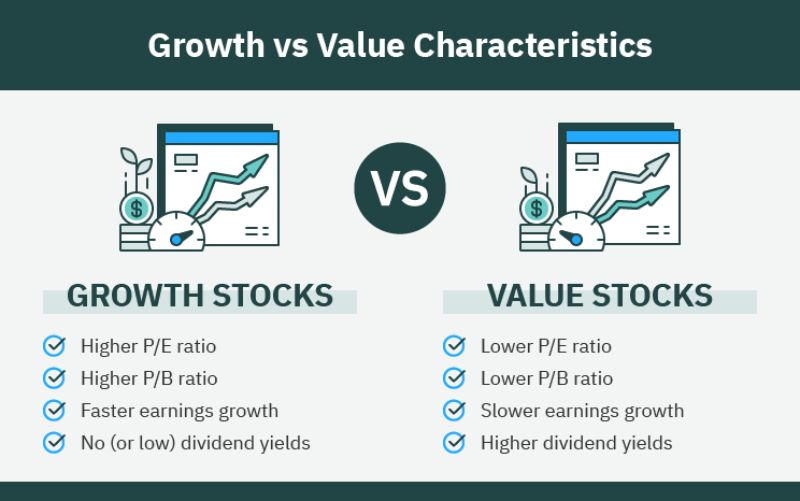목차
- Understanding Investment Basics: What You Need to Know
- Establishing Financial Goals: How to Define Your Investment Strategy
- Investment Strategies 101: Value vs. Growth Investing
- Navigating Investment Risks: Common Pitfalls to Avoid
- The Role of Technology in Modern Investing: Tools and Resources
- Creating a Balanced Investment Portfolio: Tips for Success
In today’s volatile market, understanding effective financial investment strategies is crucial for achieving financial success. This article explores various investment strategies, tips for beginners, and common pitfalls to avoid, providing a roadmap for individuals seeking to grow their wealth responsibly.
Understanding Investment Basics: What You Need to Know
Investing is a vital practice for building wealth over time and achieving financial goals. At its core, an investment is the allocation of resources—usually money—with the expectation of generating an income or profit. Understanding investment basics is essential for anyone looking to embark on their investment journey.
There are several types of investment vehicles, with the most popular being stocks, bonds, and mutual funds. Stocks represent ownership in a company; when you purchase stocks, you become a shareholder and can benefit from the company’s growth through price appreciation and dividends. Bonds, on the other hand, are essentially loans made to corporations or governments. When you buy a bond, you are lending money in exchange for periodic interest payments plus the return of the bond’s face value when it matures. Mutual funds are pooled investment vehicles that aggregate money from multiple investors to purchase a diversified portfolio of stocks, bonds, or other securities. This diversification is crucial, as it helps to spread risk and reduce the impact of any single investment’s poor performance.
The concept of diversification involves mixing various investments within a portfolio to mitigate risk. By not putting all your money into a single type of investment, you improve your chances of shield against market volatility. A well-diversified portfolio might include a mix of domestic and international stocks, various bond categories, and alternative investments, which can help stabilize returns over the long term.
In summary, understanding the fundamental concepts of investing, the types of investment vehicles available, and the importance of diversification lays a solid foundation for anyone aspiring to become a successful investor.

Establishing Financial Goals: How to Define Your Investment Strategy
Setting clear financial goals is essential for anyone considering investing. Before you allocate your hard-earned money, it is crucial to define what you want to achieve. Clear goals provide direction and help shape your investment strategy, ensuring that you invest with purpose rather than reacting impulsively to market fluctuations.
To effectively set financial goals, begin by identifying your investment objectives. Are you saving for retirement, a home purchase, or your child’s education? Once you have established your goals, consider your time horizon. This is the period you plan to hold your investments before needing to access your funds. For example, long-term goals (like retirement) typically allow for a more aggressive investment strategy, while short-term goals might require a more conservative approach.
Another key element is determining your risk tolerance. Understanding how much volatility you can handle without losing sleep at night is crucial. Some investors can tolerate higher risk for potentially greater returns, while others prefer stability. This tolerance affects your asset allocation—higher risk tolerance might mean a greater proportion of stocks in your portfolio, while lower risk tolerance may lean towards bonds and cash equivalents.
The interplay between your financial goals, time horizon, and risk tolerance creates a unique investment strategy tailored to your individual needs. By carefully considering these factors, you can make informed decisions that align with your financial aspirations.
| Factor | Description |
|---|---|
| Financial Goals | Identify what you want to achieve (e.g., retirement, education, home purchasing). |
| Time Horizon | Determine when you will need the funds (short-term vs. long-term). |
| Risk Tolerance | Assess how much market volatility you can accept. |
Understanding these elements allows you to craft a robust investment strategy, paving the way for financial success. Investing is not solely about numbers; it’s about your life goals and the steps you take to reach them. By aligning your investment strategy with clear financial goals, risk tolerance, and timing, you can navigate the investment landscape with confidence.
Investment Strategies 101: Value vs. Growth Investing
Value Investing와 Growth Investing은 투자 스타일의 두 가지 주요 범주로, 각각의 접근 방식은 투자자가 자산을 선택하는 방법에 큰 차이를 보입니다.
Value Investing은 저평가된 주식을 찾아 투자하는 전략입니다. 즉, 시장 가격이 그 기업의 본질적 가치보다 낮게 평가된 경우, 이 주식을 매수하여 장기적으로 가격 상승을 기대합니다. 예를 들어, 저명한 가치 투자자로 유명한 워런 버핏은 이러한 접근 방식을 통해 아마존, 코카콜라와 같은 기업에 투자하였습니다. 이러한 전략의 잠재적인 보상은 주식 가격이 본질적 가치에 수렴할 때 발생합니다.
반면에 Growth Investing은 빠르게 성장하는 기업에 투자하는 전략입니다. 이 스타일의 투자자는 높은 성장률을 보이는 기업의 매출, 수익 또는 현금 흐름이 평균보다 빠르게 증가할 것으로 기대하고, 그에 따라 상대적으로 높은 주가를 지불하고 투자합니다. 테슬라나 아마존과 같은 기업이 이 카테고리에 속합니다. 이러한 전략은 단기적인 변동성에도 불구하고 성장 잠재력이 크기 때문에 높은 수익의 기회를 제공합니다.
두 가지 전략 모두 리스크와 보상을 가지고 있습니다. Value Investing은 고전적인 접근 방식으로, 시장의 비효율성을 이용하여 잠재적으로 안정적인 수익을 기대하지만, 성장 가능성이 제한된 기업에 묶일 위험이 있습니다. Growth Investing은 더 높은 성장을 추구하지만, 예상보다 성장이 저조할 경우 큰 손실을 볼 수 있는 위험이 있습니다.
각 전략이 선호되는 시나리오는 다음과 같습니다. 경제가 저조하거나 불확실할 때에는 가치주에 대한 관심이 높아질 수 있습니다. 반면, 경제가 호황일 때에는 성장주가 더욱 두각을 나타내는 경우가 많습니다. 따라서 개인의 투자 목표와 시장 상황에 따라 두 전략 중 하나를 선택하는 것이 중요합니다.
| 특징 | Value Investing | Growth Investing |
|---|---|---|
| 주요 목표 | 저평가된 주식 구매 | 고성장 기업에 투자 |
| 위험 | 저성장 기업의 위험 | 높은 변동성의 위험 |
| 예시 기업 | 코카콜라, IBM | 테슬라, 아마존 |

Navigating Investment Risks: Common Pitfalls to Avoid
새로운 투자자들은 투자에서 여러 가지 위험 요소를 간과하고 실수하기 쉽습니다. 이러한 실수들은 종종 감정적인 투자, 수수료 무시, 충분한 연구 부족 등으로 나타납니다. 감정적인 투자자는 주식시장의 변동성이 클 때 불안에 휩싸여 성급한 결정을 내릴 수 있습니다. 따라서, 투자 결정을 내리기 전에는 재무 목표와 투자 전략을 명확히 하고, 감정을 통제하는 것이 필수적입니다.
또한, 투자 수수료를 간과하는 것도 큰 실수입니다. 관리 수수료나 거래 수수료는 장기적으로 수익에 영향을 미칠 수 있습니다. 그러므로, 다양한 투자 상품의 수수료를 비교하고 가장 효과적인 상품을 선택하는 것이 중요합니다.
마지막으로, 충분한 연구 없이 투자하는 것은 매우 위험합니다. 각종 기업 및 시장에 대한 분석을 충분히 하고, 기본적인 재무 지표를 이해하는 노력이 필요합니다. 다음 표는 일반적인 투자 실수를 요약합니다:
| 투자 실수 | 설명 | 해결 방법 |
|---|---|---|
| 감정적 투자 | 시장의 변동에 따라 불안하게 행동함 | 정확한 투자 목표 설정 |
| 수수료 무시 | 투자 수익을 감소시킬 수 있는 비용 무시 | 비용 비교 및 관리 수수료 확인 |
| 연구 부족 | 정보 부족으로 잘못된 투자 결정 | 신뢰할 수 있는 소스에서 정보 조사 |
이러한 점들을 염두에 두고, 다양한 자료를 참고하며 체계적인 접근 방식을 채택한다면, 보다 안전하고 성공적인 투자로 이어질 수 있습니다. 다음 장에서는 현대 투자에서 기술의 역할에 대해 다루겠습니다.
The Role of Technology in Modern Investing: Tools and Resources
The integration of technology into investing has significantly transformed how individuals approach and manage their financial portfolios. Today, platforms, applications, and innovative financial tools allow investors to make informed decisions with unprecedented ease and accessibility. The rise of digital brokerages, for instance, has democratized investing, enabling anyone with an internet connection to access the stock market without the need for a traditional broker. This shift not only reduces transaction costs but also empowers investors to execute trades quickly and efficiently.
Robo-advisors represent another exciting development in this technological evolution. These automated platforms provide investment advice based on algorithms and user inputs, such as risk tolerance and financial goals. The benefits of using robo-advisors include lower fees compared to traditional financial advisors and the ability to quickly adjust portfolios in response to market changes. Additionally, they often feature user-friendly interfaces that make investing approachable for beginners who may feel overwhelmed by traditional investing methods.
However, the reliance on technology also presents some drawbacks. One concern is the potential lack of personalized service; robo-advisors may not account for individual circumstances as thoroughly as a human advisor could. Moreover, users may become too reliant on technology, neglecting the critical thinking and research that underpins smart investing. It’s essential for investors to maintain a balance between utilizing digital tools and fostering their skills in market analysis.
In summary, while technology offers numerous tools and resources that enhance the investing experience, it is crucial to remain aware of its limitations. Investors should leverage these advancements while also developing their investment knowledge and strategies. Below is a table summarizing the key benefits and downsides of using technology in modern investing.
| Benefits | Downsides |
|---|---|
| Lower fees | Lack of personalized service |
| Accessibility to the market | Over-reliance on technology |
| Quick execution of trades | Limited consideration of personal circumstances |

Creating a Balanced Investment Portfolio: Tips for Success
투자 포트폴리오를 구성하는 것은 금융 목표를 달성하기 위한 중요한 단계입니다. 포트폴리오의 균형을 잘 잡는다는 것은 자산을 다각화하여 위험을 줄이고, 안정적인 수익을 추구하는 것을 의미합니다. 이를 위해서는 자산 배분과 정기적인 포트폴리오 리밸런싱이 필수적입니다.
첫째로, 자산 배분은 전체 포트폴리오에서 주식, 채권, 부동산 등 여러 자산 클래스에 투자하는 비율을 정하는 것을 포함합니다. 이 비율은 투자자의 위험 감수성, 재무 목표, 투자 기간에 따라 달라져야 합니다. 잘 구성된 포트폴리오는 특정 자산 클래스의 변동성이 전체 투자에 미치는 영향을 줄이는 데 도움을 줍니다. 예를 들어, 주식 시장이 하락할 때 채권은 상대적으로 안정된 수익을 제공하여 포트폴리오의 일부 손실을 보완할 수 있습니다.
둘째로, 포트폴리오 리밸런싱은 정해진 자산 배분 비율을 유지하기 위해 주기적으로 포트폴리오를 재조정하는 과정을 의미합니다. 이 과정에서는 자산 가격이 변동함에 따라 특정 자산 클래스의 비중이 증가하거나 감소하게 됩니다. 따라서 리밸런싱은 투자자가 자신의 초기 자산 배분 목표를 유지하도록 돕습니다. 리밸런싱을 통해 자산 배분이 지나치게 한쪽으로 치우치는 것을 방지하고, 꾸준히 재정적인 목표에 맞출 수 있습니다.
포트폴리오를 리밸런싱할 때 사용할 수 있는 몇 가지 방법이 있습니다. 예를 들어, 리밸런싱을 연 1회 또는 분기마다 수행하는 정기적인 방법이나 특정 자산 클래스의 비중이 설정한 비율에서 벗어날 경우 즉시 리밸런싱을 진행하는 방법 등이 있습니다. 이와 같이 정기적으로 투자 포트폴리오를 점검하고 조정하는 것은 장기적인 성공을 위한 핵심 전략 중 하나입니다.
다음 표를 참고해보겠습니다.
| 자산 클래스 | 비율 예시 (%) | 위험 수준 |
|---|---|---|
| 주식 | 60 | 중간~높음 |
| 채권 | 30 | 중간 |
| 현금 및 기타 자산 | 10 | 낮음 |
이 표는 다양한 자산 클래스를 포함한 포트폴리오 예시를 보여줍니다. 각각의 자산 클래스는 고유한 위험 수준을 가지고 있으며, 이를 어떻게 조정하느냐에 따라 전체 포트폴리오의 성과가 달라질 수 있습니다. 투자자는 자신의 투자 성향과 목표에 맞추어 적절한 자산 배분을 해야 합니다.
In conclusion, successful investing requires a blend of knowledge, careful planning, and disciplined execution. By understanding investment basics, setting clear goals, avoiding common pitfalls, and staying informed about market trends, individuals can navigate their investment journey more effectively and achieve their long-term financial objectives.
Your guide to your first investment – Fidelity Investments
How to Start Investing: A Beginner’s Guide – SoFi
How to Invest Money: Best Way to Get Good Returns | The Motley Fool
financial investment,investment strategies,beginner investing,wealth management,financial goals,investment portfolio,stock market,

